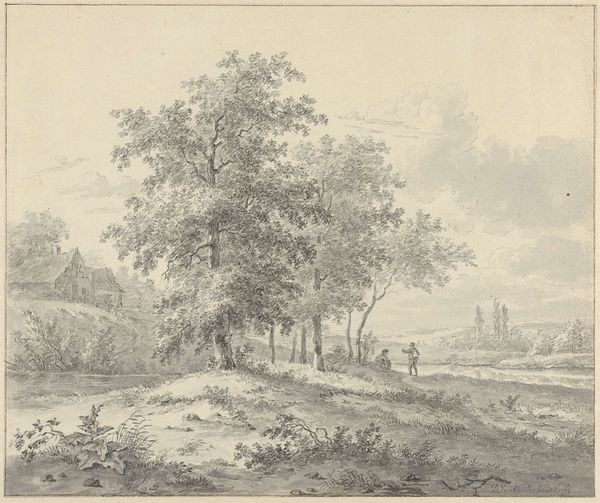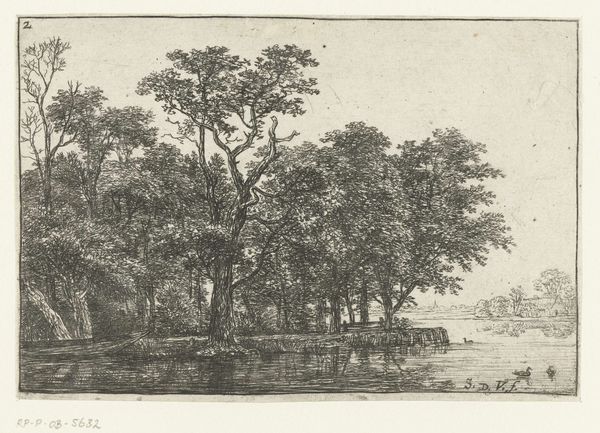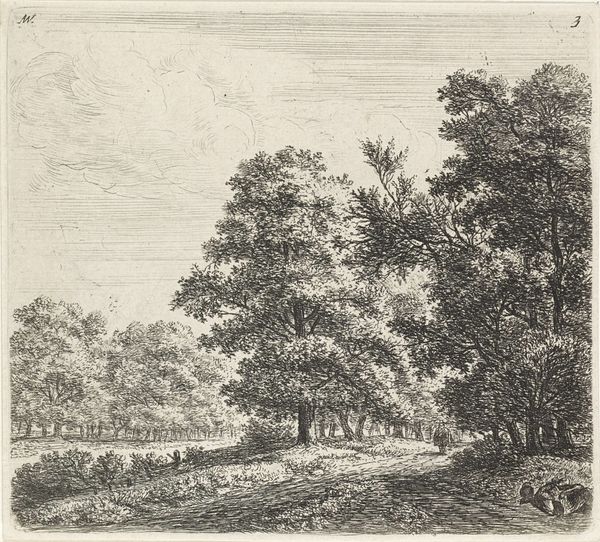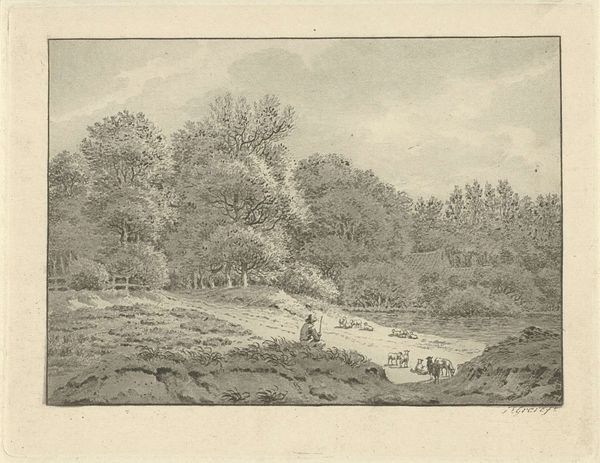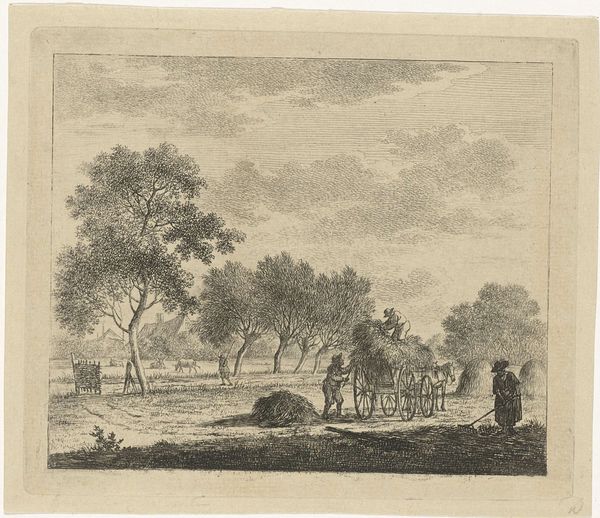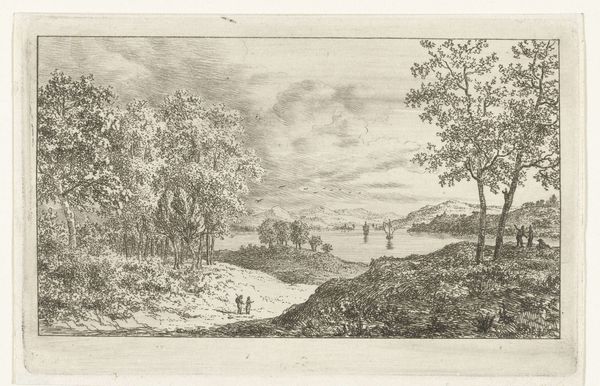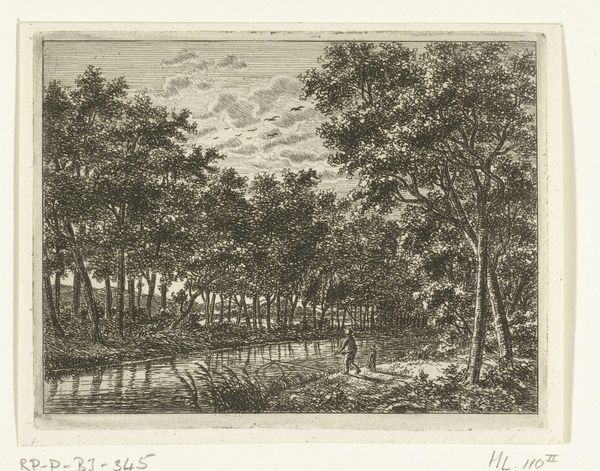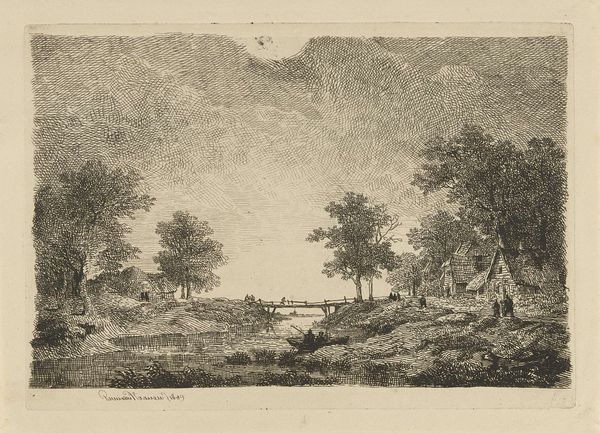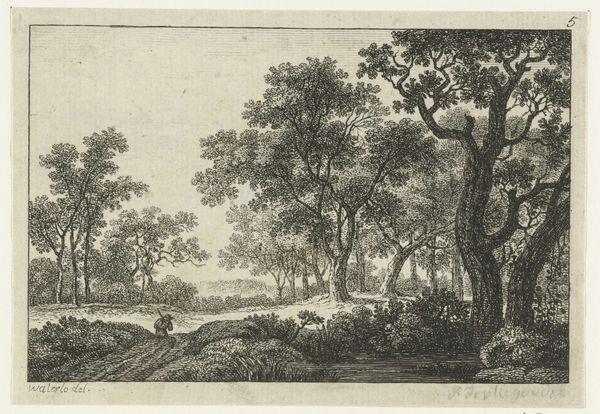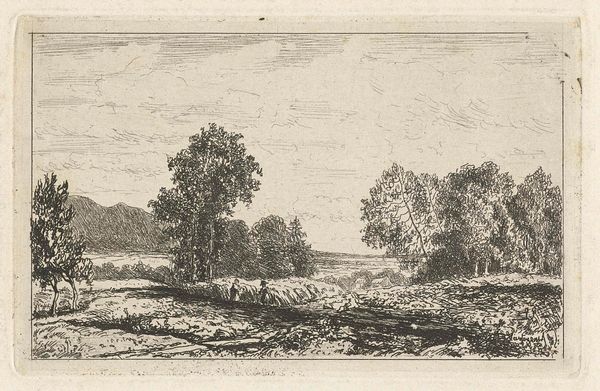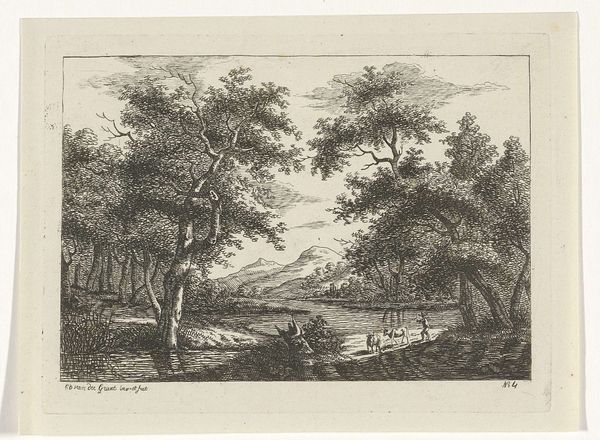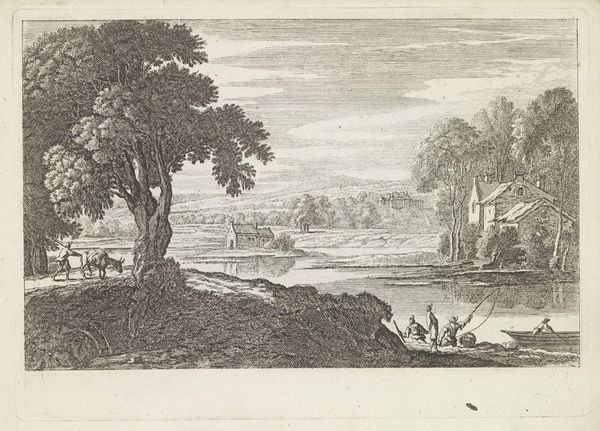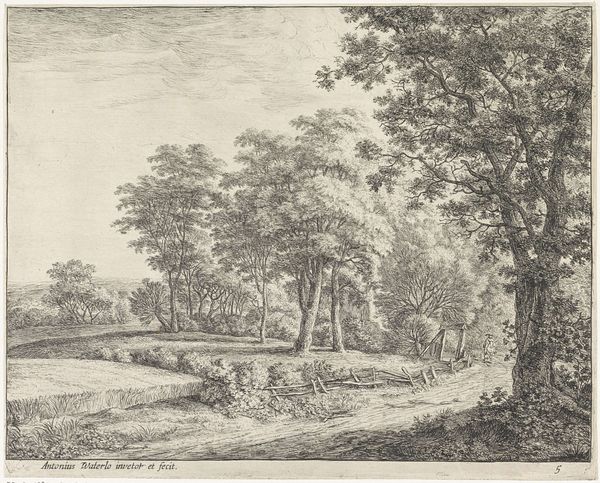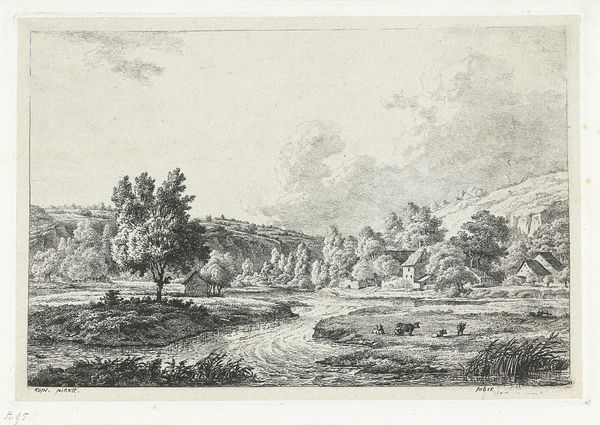
print, engraving
#
pencil drawn
#
aged paper
#
light pencil work
# print
#
pencil sketch
#
old engraving style
#
landscape
#
pencil work
#
engraving
#
realism
Dimensions: height 270 mm, width 370 mm
Copyright: Rijks Museum: Open Domain
Curator: Jan Evert Grave's "Landscape with a Fisherman on the Banks of the Gein," an engraving created between 1769 and 1805, offers us a tranquil scene. The work’s delicate lines capture the serenity of the Dutch countryside. Editor: Tranquil is one word for it. The greyscale values evoke a kind of muted quietude, almost melancholic. The stark tonal contrast definitely accentuates a stillness. Curator: Consider the composition—the foreground, dominated by textured reeds, leads the eye toward the fisherman. The intricate linework in the trees and clouds displays masterful technique. The aged paper adds a layer of temporal depth, signifying not just age, but artistic choices regarding medium. Editor: Right, but who is this fisherman, and what is his relationship to this land? The image reinforces a romantic view of rural life that glosses over the socio-economic realities. We can also ask ourselves who might find leisure along this waterway. Is that an inn over there, just for the wealthy? Curator: While socioeconomic contexts certainly add dimension, there is merit to appreciating Grave’s control of the engraving process itself—the fineness of line, the control of shadow...all contribute to the feeling of harmony. Note how the receding plane enhances depth; each element contributes to the pictorial whole. Editor: Harmony for whom, though? To truly interpret a scene, we need to see past technical skill, towards interrogating who gets to enjoy that apparent harmony. Are those agricultural estates beyond the trees? The political ramifications cannot be discounted, you know. Curator: Of course, I acknowledge broader contexts, but can’t we briefly acknowledge how form generates effect? The formal elements serve a powerful and aesthetic purpose beyond societal narratives. I find myself drawn back to the artist's use of the landscape format here and what that represents as a genre and construction of natural idylls in art. Editor: A reminder that these landscapes also reflect a dominant culture's selective vision—often sanitizing difficult social realities that become idyllic artworks consumed by that very same cultural class. All in all, I found the work challenging beyond its superficial appeal. Curator: Ultimately, Grave's piece is worth considering beyond simple aesthetic enjoyment, and reveals an opportunity to find multiple layers that shape not just the art itself, but its role within Dutch art and societal history.
Comments
No comments
Be the first to comment and join the conversation on the ultimate creative platform.
